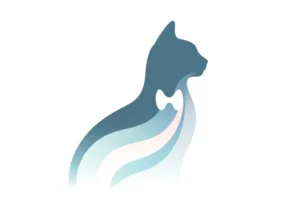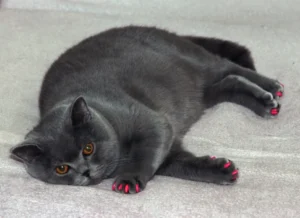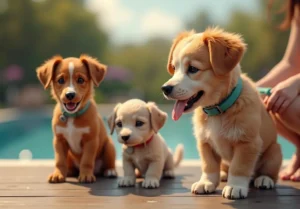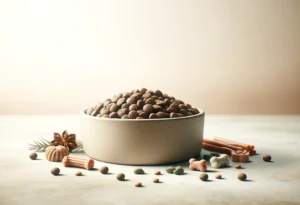Disclosure: We may earn a commission from helpful, relevant links in our content. No cost to you. See our privacy policy.
Nothing sets off alarm bells for a cat owner quite like a kitty that’s gone off its food. When your feline friend is drinking like a fish but barely touching her dinner, you’re bound to worry.
Now, let’s try to understand what could be triggering this change. Diving into possible reasons and associated health conditions can help us manage the situation effectively, ensuring our furry pals stay happy and healthy.
As cat parents, it’s our responsibility to understand their unique behaviors, however bewildering they may be.
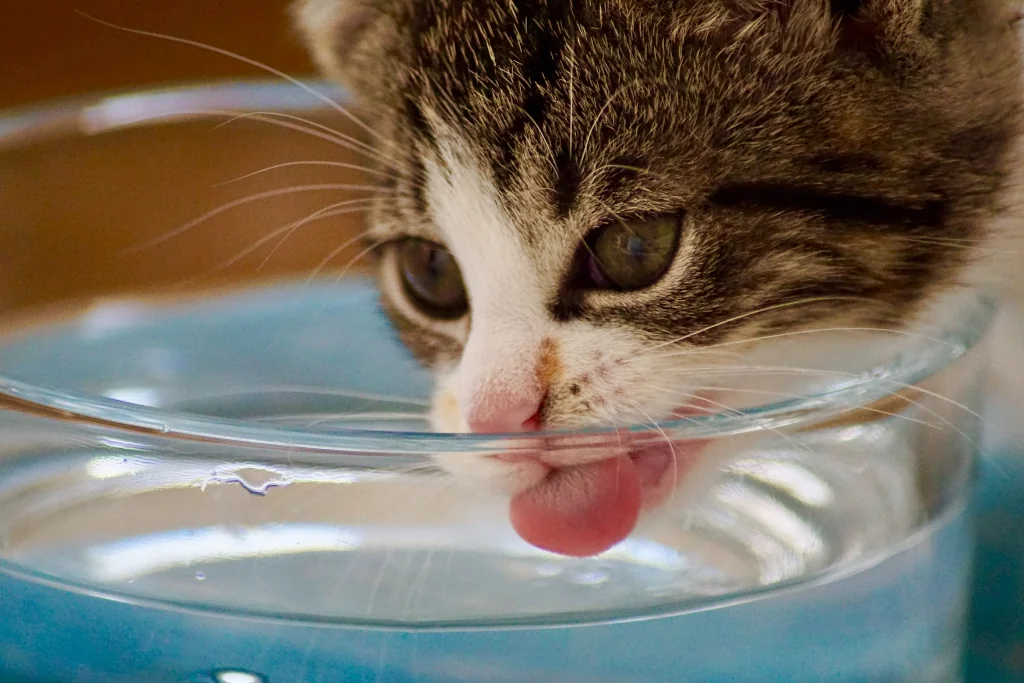
Possible Reasons Your Cat is Drinking More Water
When your cat starts drinking more water than usual, it’s often a sign that something isn’t quite right.
The scientific term for this is polydipsia. Increased thirst can occur for various reasons, from simple dietary changes or weather conditions to more serious health problems.
If your cat is eating dry food, she might drink more water to compensate for the lack of moisture in the food. Similarly, hot weather can make your cat thirstier.
However, if neither of these factors applies, and your cat’s drinking behavior has changed drastically, it’s likely a sign of underlying health issues.
Health Conditions Associated with Eating Changes
Several health conditions could cause your cat to drink more water while eating less. These include:
- Diabetes. Much like in humans, feline diabetes is characterized by high blood sugar levels, leading to excessive thirst and changes in eating habits. Increased thirst is a common sign, but there are other symptoms as well as treatment options available.
- Kidney Disease. Kidneys help filter out toxins. If they’re not functioning correctly, your cat may drink more water to compensate and might also lose her appetite. Your vet would need to do some tests to diagnose it, and dietary modification is a common treatment.
- Hyperthyroidism. This condition occurs when the thyroid gland produces too much thyroid hormone, causing symptoms like increased thirst and changes in appetite. It’s a fairly common disease affecting middle-aged and older cats.
Remember, these conditions are treatable if caught early. So, if you notice any sudden changes in your cat’s eating and drinking habits, it’s essential to consult your veterinarian immediately.
While it’s crucial for us to observe and understand our feline friends, it’s equally important to remember that we’re their first line of defense against their health issues. As they say, prevention is better than cure, especially when it comes to our furred family members.
Appetite Loss in Cats: When Should You Worry?
It’s not unusual for cats to turn their noses up at their food occasionally.
However, if your cat’s lack of appetite persists for more than 24 hours, it’s time to be concerned. Extended periods of not eating can lead to a serious condition called hepatic lipidosis, or fatty liver disease, which can be life-threatening.
Cats are not built to go without food, and their liver becomes overwhelmed with fat if they stop eating. This makes it even more critical to monitor their food and water intake closely.
Aside from prolonged appetite loss, watch for additional signs like lethargy, vomiting, diarrhea, weight loss, changes in behavior, or other unusual symptoms. These could indicate underlying health issues.
When it comes to your cat’s health, you know them best, so trust your instincts. If something doesn’t seem right, it’s better to err on the side of caution and seek veterinary advice.
Tips to Encourage Your Cat to Eat
Sometimes, getting a cat to eat can be as simple as making a few changes to their feeding routine. Here are some tried-and-true tips:
- Switch Up Their Food. Cats can be picky eaters, and sometimes they simply get bored with their usual fare. Try introducing different flavors or types of food, like wet food if they usually eat dry.
- Warm It Up. Warming your cat’s food can make it more appealing, as it enhances the aroma, making it more enticing for your cat.
- Use a Puzzle Feeder. Cats are natural hunters. Using a puzzle feeder can engage your cat’s hunting instincts and stimulate their interest in food. Try the Catit Senses 2.0 Food Tree, which turns eating into a game, but there are many others to choose from.
- Hand Feeding. Occasionally, cats just want a little extra attention. Hand feeding can sometimes encourage a reluctant eater to take a few bites.
- Consult a Vet. If all else fails, consult your vet. They may recommend appetite stimulants or prescription diet food.
We know how important it is to have your cat eat healthy and exercise regularly. Dietary modification is a proven aspect of treating many diseases in cats, so getting them to establish healthy eating habits is essential.
But remember, every cat is unique. What works for one might not work for another. Experiment with different strategies and be patient. Before you know it, mealtime will be a happy, stress-free experience for both of you again.
When Is it Time to Visit the Vet?
As a cat parent, it’s always concerning to see changes in your pet’s behavior, particularly when it involves their eating or drinking habits.
Let me share an incident with my own cat, Smokey, that illustrates the importance of knowing when it’s time to seek professional help.
Smokey is usually a hearty eater, but one day, he started ignoring his food. Initially, I thought it was just one of his usual fussy moments and didn’t think much of it. But then a day passed, and another, and Smokey was barely nibbling his meals.
What was more alarming was his increased water intake. Having written countless articles on pet health, I knew this wasn’t a good sign. By the third day, I was on high alert. My normally playful Smokey was becoming lethargic, and his food remained untouched. It was time to see the vet.
Upon examination, our vet found Smokey had developed a urinary tract infection – a condition more common in male cats that can cause discomfort during urination, thus leading to an increase in water intake and a loss of appetite. Fortunately, we caught it early, and with proper treatment, Smokey bounced back in a couple of weeks.
Just like in Smokey’s case, if your cat is not eating but drinking lots of water for more than a day or two, displays lethargy, vomiting, drastic changes in weight or behavior, or any other unusual symptoms, it’s time to consult with a vet. Always better safe than sorry.
FAQs
Can heat affect my cat’s eating habits?
Heat can indeed affect your cat’s eating habits. Cats may eat less during hotter weather due to reduced activity levels and increased water consumption.
Can changes in a cat’s environment lead to eating less?
Yes, changes in a cat’s environment can lead to stress, which in turn can affect their eating habits. Moving to a new home, introducing a new pet or family member, or changing their feeding schedule can lead to less eating.
Is my cat’s breed more prone to certain eating or drinking habits?
While individual variations exist, certain breeds like Siamese cats can be more prone to developing conditions like diabetes or obesity, which can affect their eating or drinking habits.
Alex, a passionate animal lover, has experience in training and understanding animal behavior. As a proud pet parent to two dogs and three cats, he founded AnimalReport.net to share insights from animal experts and expand his knowledge of the animal kingdom.

